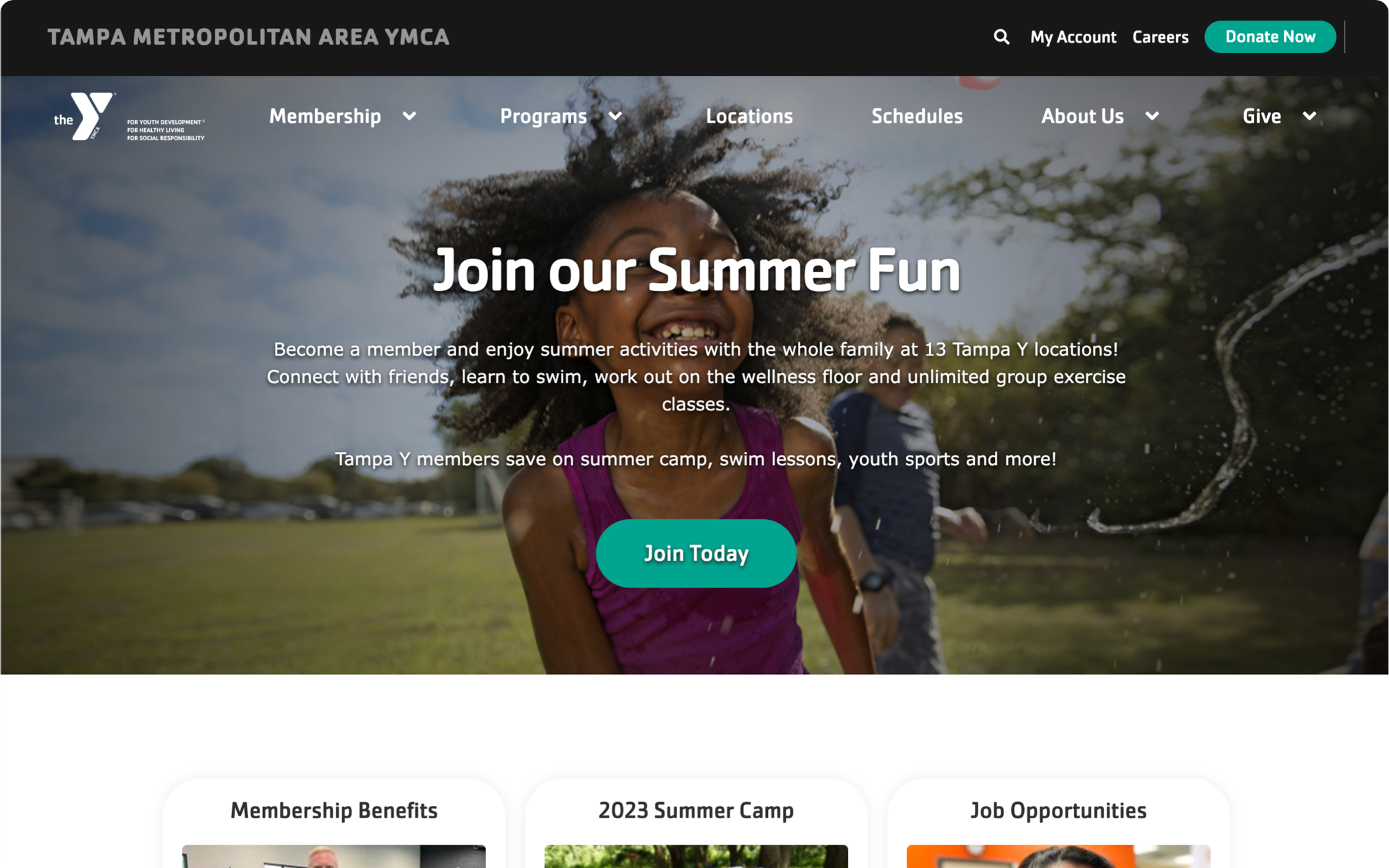Power Your Mission: 3 Ways Drupal Meets the Unique Needs of Nonprofit Organizations
Authored by: Bjorn Thomson, Dave Bezuidenhout and Kylie Aldridge-Ogden.
As a nonprofit marketer, your job is challenging, fast-paced, and demanding. You juggle myriad priorities on any given day, and the last thing you need is a rigid, difficult-to-use CMS that slows you down and keeps your organization from reaching its goals.
But if you’re like many nonprofit leaders who come to us for help, that’s exactly what you’re working with. And if you also happen to use a proprietary system that requires you to put in a ticket anytime you need ongoing maintenance and support — You’re at the mercy of that system’s in-house developers when it comes to keeping your website functioning at peak performance.
It doesn’t have to be this way.
Your CMS should support your marketing efforts, not hold you back. So if your current CMS isn’t taking you where you want to go, here are three ways Drupal can drive your nonprofit forward.
1. Storytelling Capabilities That Empower Content Editors to Demonstrate Impact
Whether you’re a charitable organization, government entity, or membership-based nonprofit, your website exists to connect your mission to your audience. And the primary way to do that is through human-centered, impact-focused storytelling that evokes emotion.
Drupal can’t tell your nonprofit’s story for you. But it can facilitate the process and make it easy for content editors across your organization to participate. That’s important since many non-marketers feel out of their depth when navigating the back-ends of CMSs like WordPress.
Drupal’s flexible templates, content governance options, and permission settings make content editing so simple that you could even invite volunteers to play a direct role in content creation. With Drupal, you can:
- Establish roles and content governance workflows to ensure every piece of content published to your site is on-brand and mission-friendly
- Create a library of composable building blocks and templates so content editors can easily build beautiful landing pages and microsites
- Structure data and content so that feature elements like articles, news stories, donor profiles, and impact testimonials show up seamlessly across numerous pages
- Drag and drop photos, add text fields, include pull quotes, and embed videos — all vital elements that facilitate digital storytelling across your site
- Allow contributors to quickly publish content to various channels (e.g., social media; mobile apps)
- Create an adaptive multilingual experience that lets your audience access content in their preferred language
Accomplishing all of this usually requires some up-front development effort and the help of a knowledgeable agency partner. But once the building blocks are in place, it’s easy for you and other content contributors to keep your nonprofit content strategy fresh and engaging.
2. Integrations and Workflows That Extend Your Nonprofit’s Reach
Marketers should always make it a priority to track the website data that sheds light on their digital strategy’s performance. But for nonprofit marketers, it’s equally important to integrate that data with third-party tools like CRMs, membership portals, and event management platforms.
After all, everyone who visits your site is a potential donor, volunteer, or beneficiary of your services. But most nonprofits cultivate relationships with these potential constituents in a multitude of ways — not just online. As such, you need to be able to track the activity of online visitors and connect it to your nonprofit’s big picture.
Drupal’s integration capabilities can:
- Facilitate donor-friendly one-time and recurring giving options and help you reach your fundraising targets
- Enable data to flow to and from third-party platforms such as Salesforce and Blackbaud
- Allow you to automate your marketing workflows and set up nurture campaigns to increase engagement
- Help membership organizations offer robust self-service options for their users
- Simplify the process of managing event registrations (e.g., swimming lessons, 5K fundraising events) and real-time event calendars
There are hundreds of existing APIs to connect your Drupal CMS to the platforms and tools your nonprofit already uses. A knowledgeable agency partner can also build custom integrations if you require unique capabilities.

3. Mobile-First UX/UI Options to Meet Your Audience Where They Are
We are living in a digital-first world, and the latest research shows that 80% of users access the internet on their phones. That means if your CMS doesn’t offer a flexible and responsive mobile UX, you could be alienating — or at least frustrating — a large portion of your audience.
Think about the last time you bought tickets for an event or shopped online. Did you reach for your laptop? Or did you take care of it on your phone? Enterprise websites like Ticketmaster and Amazon know that, increasingly, people would rather use their always-in-hand phones to complete online transactions. As a result, their mobile user experience is just as frictionless as a desktop or laptop experience.
Your nonprofit should provide a positive mobile UX too — one that’s accessible, inclusive, and reflects positively on your mission. Whether your site visitors want to make an online gift or sign their child up for an activity, they should be able to do so quickly, easily, and safely on any device.
Drupal takes the guesswork out of this equation. Core themes are automatically responsive for phones and tablets, which means you don’t have to worry about how your site will appear on a smaller screen. They’re also built with accessibility in mind, ensuring that users who rely on assistive technologies will also have a positive experience.
Position Your Nonprofit Website for Long-Term Impact With Drupal
You’re on a mission to connect donors, volunteers, and community members to your nonprofit cause. It's not an easy undertaking — but it’s much more achievable when you have the right technologies at your disposal.
Drupal can help you tell your organization’s story in compelling ways, integrate with the other systems and platforms that are vital to your day-to-day work, and meet your audience where they are. This, in turn, will free you up to create digital experiences that turn interest into action, enabling your nonprofit to have a greater impact on the world around you.
Want to learn more about how Drupal can advance your nonprofit’s mission? Let’s talk.
Looking for a quick snapshot of how Drupal empowers nonprofit marketers? Check out the infographic we’ve included below! It visually summarizes the key benefits and features discussed in this blog, giving you a clear and concise overview at a glance.








